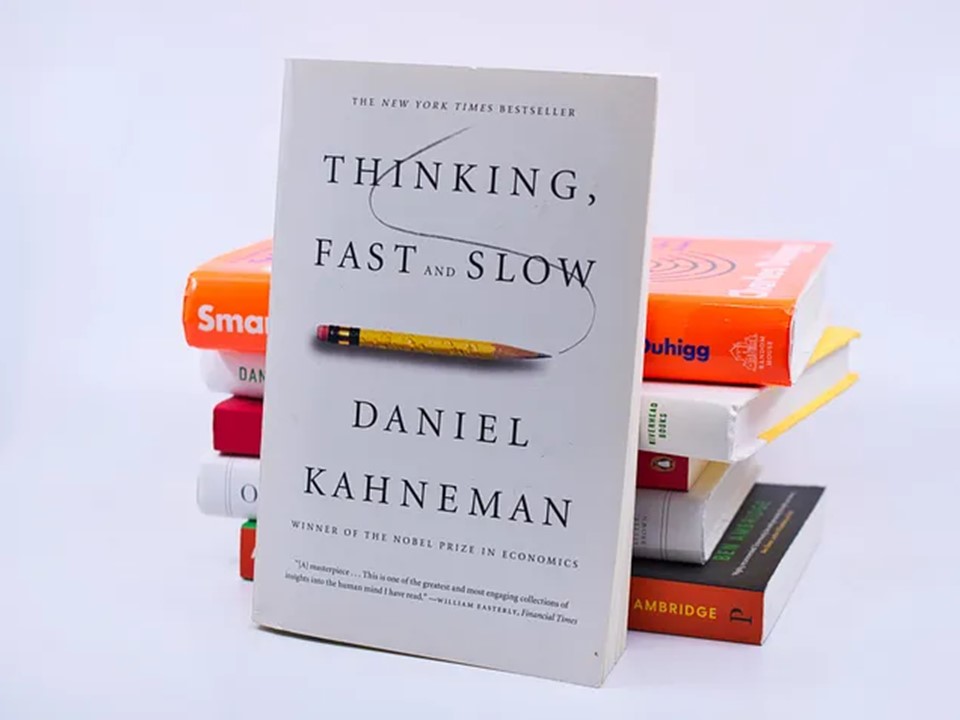“All behavioral economists are against active investing—I might as well say it outright—because we think the market is unpredictable, or very, very difficult to predict.” — Dr. Daniel Kahneman, CFA Institute Podcast, 2018.
Dr. Daniel Kahneman’s research has significantly shaped the understanding of human behavior, particularly in relation to decision-making processes, including investing. His award-winning book Thinking, Fast and Slow offers essential insights that investors can use to navigate the complexities of financial markets and guard against common cognitive biases.
Here’s a guideline to help investors make better decisions, based on Kahneman’s concepts and his recommendations for avoiding common psychological pitfalls:
1 Engage in Thoughtful Decision-Making
Kahneman’s research introduces two systems of thinking:
- System 1 is intuitive, emotional, and quick but prone to errors, especially in complex scenarios like financial markets.
- System 2 is slower, more deliberate, and logical, which makes it ideal for investment decisions that require analysis and consideration.
Investors often rely too much on System 1 thinking, reacting emotionally to market movements or following popular sentiment. This can lead to poor decisions based on incomplete or biased information.
Guideline: Investors should engage in System 2 thinking for financial decisions. This means taking time to analyze investment opportunities, assessing risks, and making rational, long-term decisions rather than reacting impulsively to market fluctuations or media headlines.
2 Acknowledge and Mitigate Biases
Kahneman stresses that all humans are susceptible to cognitive biases, such as confirmation bias and availability bias. These biases often cloud judgment, leading investors to ignore information that contradicts their beliefs or place too much emphasis on recent events.
Guideline: Investors should be mindful of their biases when making decisions. A diversified perspective, seeking out contrarian opinions, and working with a trusted advisor can help mitigate these biases. Investors should routinely challenge their own assumptions and make decisions based on data and objective analysis rather than emotional responses.
3 Beware of Overconfidence
One of the most dangerous cognitive traps is overconfidence. Kahneman shows that investors often believe they understand markets better than they do, which leads to excessive risk-taking or concentrating investments in narrow areas. Overconfidence stems from the illusion that past events make the future more predictable than it is.
Guideline: Investors should guard against overconfidence by diversifying their portfolios across various sectors, asset classes, and regions. By acknowledging that markets are unpredictable, they can reduce the risks of making concentrated bets on stocks or trends that may not perform as expected.
4 See the Bigger Picture
Kahneman highlights the human tendency to overemphasize current events, a cognitive bias known as availability bias. This bias leads investors to give disproportionate attention to recent market news, often causing unnecessary panic or excitement.
Guideline: Investors should focus on long-term financial goals and avoid reacting to short-term market movements. A key lesson is to zoom out and appreciate broader financial history. The market may be volatile in the short term, but a well-diversified strategy based on sound financial principles is more likely to yield positive outcomes over time.
5 Diversify Information Sources
Kahneman also emphasizes the importance of questioning one’s own beliefs. Many investors fall victim to confirmation bias, seeking out information that supports their pre-existing opinions while ignoring contradictory evidence.
Guideline: Investors should broaden their information sources, seeking different perspectives from various experts and advisors. Instead of following investment tips from media or popular financial shows, investors should focus on more thoughtful and comprehensive analysis. Having a second opinion, especially one that challenges initial instincts, can lead to more balanced decision-making.
6 Embrace Uncertainty
Kahneman argues that uncertainty is a fundamental part of investing. While people tend to crave certainty and predictability, markets are inherently unpredictable. The tendency to assume that past events make future predictions more reliable is known as hindsight bias.
Guideline: Investors should acknowledge that they cannot predict the future with certainty. Instead of trying to “time the market” or chase trends, they should focus on building a diversified, risk-adjusted portfolio that can weather various market conditions. Embracing uncertainty means being comfortable with the inherent ambiguity of investing and sticking to long-term strategies.
Conclusion: A Systematic Approach to Investing
Kahneman’s behavioral insights suggest that the key to successful investing lies not in predicting the markets, but in understanding one’s own behavior and decision-making process. Investors who take a systematic, disciplined approach will avoid common cognitive traps and make more informed decisions.
To apply these insights:
- Use System 2 thinking for all major financial decisions.
- Routinely check for biases and seek a diversified range of information sources.
- Focus on long-term goals and avoid reacting to short-term market fluctuations.
By combining reason, discipline, and an understanding of behavioral economics, investors can improve their decision-making process and build more resilient portfolios.


Very good https://t.ly/tndaA